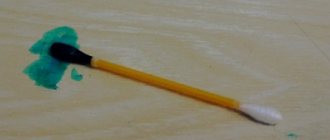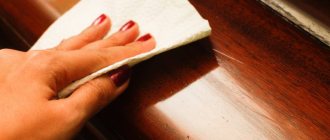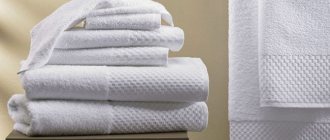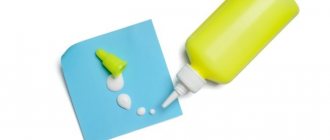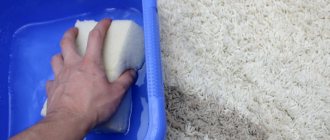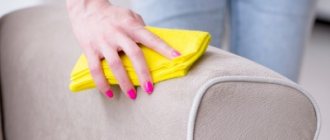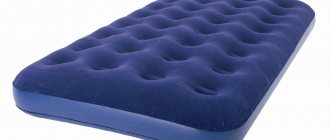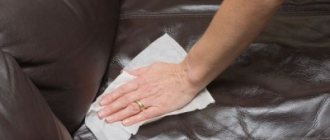Home textiles and some items of clothing sometimes have to be treated with starch to give them rigidity and a clear shape. In modern times this is done much less frequently than, for example, at the end of the last century. Starched items are much less susceptible to contamination and have a completely different appearance than simply washed items. Read more about how to starch bed linen, tulle, clothes, using or without a washing machine, in the text of this article.
Starched items look elegant, fresh and festive
Why starch bed linen?
Starched clothes and linen have some distinctive characteristics:
- textiles become noticeably denser, its fibers are strengthened;
- linen items have a pleasant crunch and smell good;
- the material practically does not wrinkle, maintaining the required shape;
- Even if the clothes were yellowed, they are bleached;
- Dirt is less absorbed into clothing.
Starch gives products a neater appearance and protects them from rapid contamination.
But it is not always worth starching bedding - starched fabric does not “breathe”, as its pores become clogged. This can create unpleasant sensations for the skin, promote the occurrence of fungus, mold, and the proliferation of pathogenic bacteria. It is for this reason that bed starch is very, very soft.
It is also undesirable to starch underwear and summer clothes, with the exception of some of their parts. Starch can change the shade of dark fabrics, but it does not “stick” to synthetic fabrics. Textile elements embroidered with floss threads can generally stick together and be hopelessly damaged by starch. Calico, cotton, satin, linen, chintz, cambric tolerate this process well.
What is it for?
The meaning of the starching procedure is to immerse or rinse things with a starch solution. Absorbed into fabric fibers, starch forms a very thin protective film on the surface of products.
Fabric impregnated with starch paste becomes more durable, less susceptible to wrinkles, and retains its shape well. The protective layer also prevents clothing from getting dirty. If you periodically starch your laundry, you will notice that it does not get dirty as much. It is impossible not to note the improvement in the quality of washing: the starch film, in contact with soapy water, instantly dissolves, and at the same time all contaminants disappear.
If you starch white linen, you can achieve the perfect whitening effect. Also a pleasant addition will be the exceptional freshness of things and a pleasant aroma.
How to starch bed linen and tulle at home
Starched bed linen wrinkles less and washes better
Bedding, as well as most types of tulle and curtains, are starched gently, after washing and squeezing thoroughly.
Tulle takes on a more attractive appearance after the starching process
Then prepare this solution:
- composition of the mixture – one teaspoon of starch per liter of cold water;
- First, the starch is diluted in a small container, poured with two glasses of water;
- the more laundry you need to starch, the more such liquid is prepared;
- stir so that the consistency is homogeneous, without lumps;
- then put the water on to warm up - as much as is needed for rinsing;
- after boiling, pour the starch solution from a small container into the water and mix;
- the composition is cooled - the result should be “slippery” water, denser than usual;
- Rinse the bedding in the mixture described above for several minutes, tulle for up to half an hour.
Traditional starch mixture made from potato starch
Before hanging to dry, do not twist the bedding - let it sag a little, after which you can lightly wring it out. Before drying, it is important to shake the fabric, straighten it well, and it is better to iron the starched fabric while still slightly damp.
To starch an already dry fabric, the liquid described above is put into a spray bottle and the clean textile is treated. This process significantly saves time and effort.
You can lightly starch the material by ironing it through gauze soaked in a weak starch solution
Useful tips
It is important to know that not all fabrics can be treated with a paste substance. It is permissible to starch only products made from natural materials: linen, cotton, chintz, calico, satin, cambric. Silk and synthetic underwear cannot be starched.
Let us present to your attention the procedure for preparing a starch solution, which can be used for both automatic and manual washing. Here's a step-by-step guide to action.
- Dissolve starch in cool water. For 1 liter of liquid you need to take a quarter teaspoon of powder.
- Boil water in another saucepan, then carefully pour starch milk into the boiling water in a thin stream, stirring constantly.
- Reduce heat and cook the paste for 5 minutes. The solution should turn out transparent, similar in consistency to regular jelly.
- Cool the starch paste.
- If there are lumps in the composition, strain the sticky liquid using a sieve.
Before starching the laundry, the paste is diluted with ordinary cool water to the required consistency. If you want to give your laundry an interesting blue tint, you can add a little blue to the adhesive solution.
A spoonful of salt added to the paste will give your accessories a glossy shine after ironing. Table salt will also help the products not to freeze when dried in the fresh air in winter. Another useful tip: to prevent starched material from sticking to the sole of the iron, it is better to add 3 drops of turpentine or 0.5 caps of liquid laundry gel to the adhesive composition.
How to starch shirts at home
Starched items look quite festive, but do not allow air to pass through well, so they are not suitable for constant wear.
A high-quality starched shirt emphasizes the status of the owner, giving him elegance. The method described below is suitable for both women's and men's shirts:
- prepare a medium-hard solution of starch or a purchased synthetic product;
- the composition is thoroughly mixed in a basin so that there are no lumps; it is filtered through several layers of gauze;
- the shirt is placed in the mixture for about fifteen minutes;
- then the product is lightly wrung out;
- To prevent the shirt from becoming deformed, it is dried on hangers - preference is given to wide ones;
- It is not recommended to dry it completely; iron the item slightly damp, since yellow spots often appear on overdried ironing.
Particular attention must be paid to the collar and cuffs - these parts are starched separately, using the harshest solution, and ironed, giving them a strong stand.
If you only need to starch the collar or cuffs of a shirt, it is better to use a spray bottle or brush
Hard starching
The hard method is used if it is necessary to starch a petticoat, which must hold several skirts on top, or to make a collar with cuffs or some decorative element particularly rigid and resistant.
The solution recipe has changed:
- a teaspoon of borax and dilute in a glass of hot water and cool to room temperature;
- Dilute 50 grams of starch (approximately 2 level tablespoons) in a glass of cold water;
- boil a liter of water and pour diluted starch into it;
- Pour borax into the brewed starch solution, mix everything and leave for 2 hours.
If you need to prepare 2, 3 or more liters of solution, then you proportionally increase the amount of borax and starch.
How to starch things from different types of fabric
Knitted fabric is also treated gently, but it should be dried exclusively on a horizontal surface, otherwise the product will stretch and lose its shape. For knitted products, giving them rigidity, it is recommended to treat them with a gelatin mixture:
- pour a large spoonful of gelatin into half a glass of water and heat in a water bath until completely dissolved;
- then add another glass of water;
- the product is impregnated with the resulting solution.
Ready-made gelatin solution - express starching
This composition is also used for lace napkins, textile flowers and other similar decor. Starch is not suitable for processing dark or colored fabrics, as it leaves whitish spots. The following adhesive composition is recommended for such fabrics:
- depending on the purpose of the textile material, soft or hard processing is performed;
- for soft processing, PVA glue is diluted with warm water in a ratio of one to one, for the hard version - in a concentration of two to one;
- The fabric is placed in the solution, after complete soaking, it is removed and wrung out.
You can starch clothes with PVA glue; to do this, you need to dilute it with water.
This method is not suitable for underwear or excessively large items. There is also sugar syrup treatment:
- six to seven tablespoons of sugar are boiled in a liter of water;
- textiles are placed in a hot solution, soaked, and squeezed out;
- there is one drawback - the “sweet” fabric will attract insects.
You can also starch things with ordinary white sugar.
To starch the most delicate silk fabric, a solution of gelatin or silicate glue is suitable - in this case, dilute one spoon per five liters, soak the product, and squeeze it out a little. After processing, silk acquires elasticity and a beautiful shine.
When you need to starch thin and delicate fabric, use a weak solution
Tulle is used for sewing elegant dresses and ballet tutus. It will require a medium-hard starch solution - two teaspoons per liter of water. The product is thoroughly soaked, removed, and straightened.
For stiffness, the petticoat needs two tablespoons of starch per liter of water.
Multi-layer gauze products are processed in the most harsh ways - at least two large spoons of starch and a small spoon of sodium boric salt are added to one liter of water, the product is immersed there, and when it is sufficiently saturated, squeezed out.
You can starch knitted napkins and a school white apron with numerous laces using a medium-hard solution.
Openwork products made from fine yarn are kept in starch liquid for 5-10 minutes
The product is pre-washed by machine or by hand, placed in a starch mixture for twenty minutes, removed, no need to wring out the apron. As an option, a freshly washed apron is simply sprayed with a solution from a spray bottle or blotted with a wet starchy cloth.
The embroidery canvas is starched to simplify the process of embroidering on it. To do this, the textiles are placed in a hard starch solution for about fifteen minutes and wrung out well. The already embroidered fabric is pre-washed and impregnated with a medium-hard composition for no more than fifteen minutes.
To starch expensive fabrics with bright, rich colors and complex textures, it is better to use a ready-made product
Basic Rules
Starching fabric at home is not difficult, let’s figure out how to do it correctly.
Basic Rules:
- Only clean clothes can be processed; as a rule, they are starched immediately after washing;
- for processing it is better to use corn starch, but you can also use potato starch;
- Depending on the type of fabric and the tasks at hand, the concentration of the starch solution is selected. There are three options - weak, medium, concentrated.
The procedure can be carried out either manually or in an automatic machine. When working manually, you need to make a solution and immerse the item completely in it for a short time. Then the item is removed, gently wrung out, straightened and dried.
If you plan to carry out the procedure in a car, then the prepared starch solution must be poured into the compartment intended for the air conditioner. After completing the cycle, be sure to rinse the tray to remove any remaining starch.
You can cook not only the whole thing, but also its individual parts. For example, for men's shirts, only the collar and cuffs can be starched. This can only be done manually.
How to starch bedding and clothes in a washing machine
To starch things in the washing machine, you need to add a small amount of adhesive liquid to the conditioner compartment and start the usual washing cycle
Ready-made starching compositions are sold in household chemical stores - some are applied to the fabric before ironing, others during washing. Starching bedding and linen in the washing machine is as easy as shelling pears:
- to begin with, prepare a “soft” starch solution according to the above-described scheme;
- the composition is poured into the engine compartment for the air conditioner;
- The washing machine toggle switch is set to rinse mode;
- after the process is completed, the laundry is taken out, shaken, and dried;
- The machine is wiped from the inside and ventilated.
When starching in a washing machine, special synthetic liquids are often used, for example, based on polyvinyl acetate, which cope with the task no worse. Additionally, you should not use any conditioners.
A starch agent that is added directly during washing
To starch clothes and table linen made from various types of fabric, a solution of the required composition and concentration is prepared and poured into the machine as described above.
DIY starch spray for ironing
You can make your own starch spray. This requires:
- 400 ml warm water;
- 1 tablespoon starch;
- 2 drops of any essential oil (optional).
Mix starch in water and pour the solution into a spray bottle. If you wish, you can add a couple of drops of any essential oil whose smell you like to the solution. Before spraying the solution onto the fabric, shake the bottle vigorously several times.
How to iron and dry starched items
Dry the fabric until it becomes slightly damp, then begin ironing
All fabrics are ironed while still wet, on both sides, but in slightly different ways:
- silk - through smooth fabric;
- tulle - ironed while wet, straightening the folds;
- embroidered products - only on the reverse side;
- lace - through smooth fabric or gauze;
- gauze - iron damp, straighten folds immediately;
- A white school apron is ironed with a warm iron.
If you first add a little salt to the starch solution, the fabrics will not stick to the iron and will acquire a unique shine.
They should also be dried differently:
- a silk blouse and dress are carefully hung on hangers;
- tulle, gauze are dried in a straightened form;
- a lace school apron is dried by laying it out on a horizontal surface;
- embroidery canvas is also dried horizontally;
- Thin embroidered napkins or lace are dried on a towel, pinned with invisible edges, and straightened.
Any starched items should not be dried in the cold or in direct sunlight.
Spray for applying starch before ironing
Types of starching
There are three types of starching, which vary depending on the intensity of the procedure:
- Soft starching,
- Medium starching
- Hard starching.
For example, underwear, bed linen, bedding, light blouses and dresses are softly or very softly starched; Men's shirts and tablecloths are moderately starched, but hard starching is used in the case of partial processing - for cuffs, collars and other elements of clothing. At the same time, the amount of starch per liter of water varies.
Ready-made solutions for ironing and starching in aerosols
You don’t have to prepare the solutions yourself, but buy ready-made ironing products in aerosols. Such products are sold in hardware departments. For example, you can use:
- Reinex. Ironing agent in aerosol packaging.
- Sano Iron Starch. A liquid that can be used to spray items before ironing, or poured into the water compartment of a steam iron.
- Top Cleaner. Aerosol product for treating shirt collars and cuffs.
- Satin. The product is in the form of a spray, used when ironing clothes. Convenient to use when ironing dry bed linen.
It’s easy to use ready-made products. The item is processed immediately before ironing. You can process both the entire thing and its individual parts. For example, a flounce on a skirt or a collar on a shirt.
